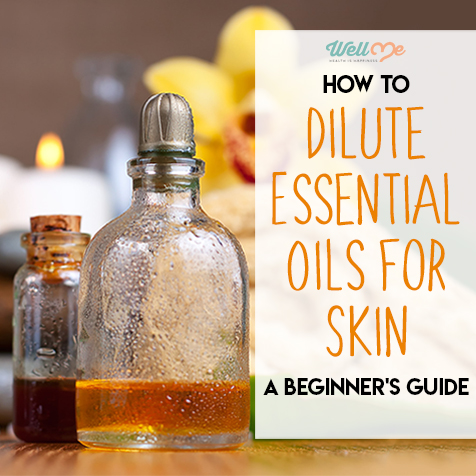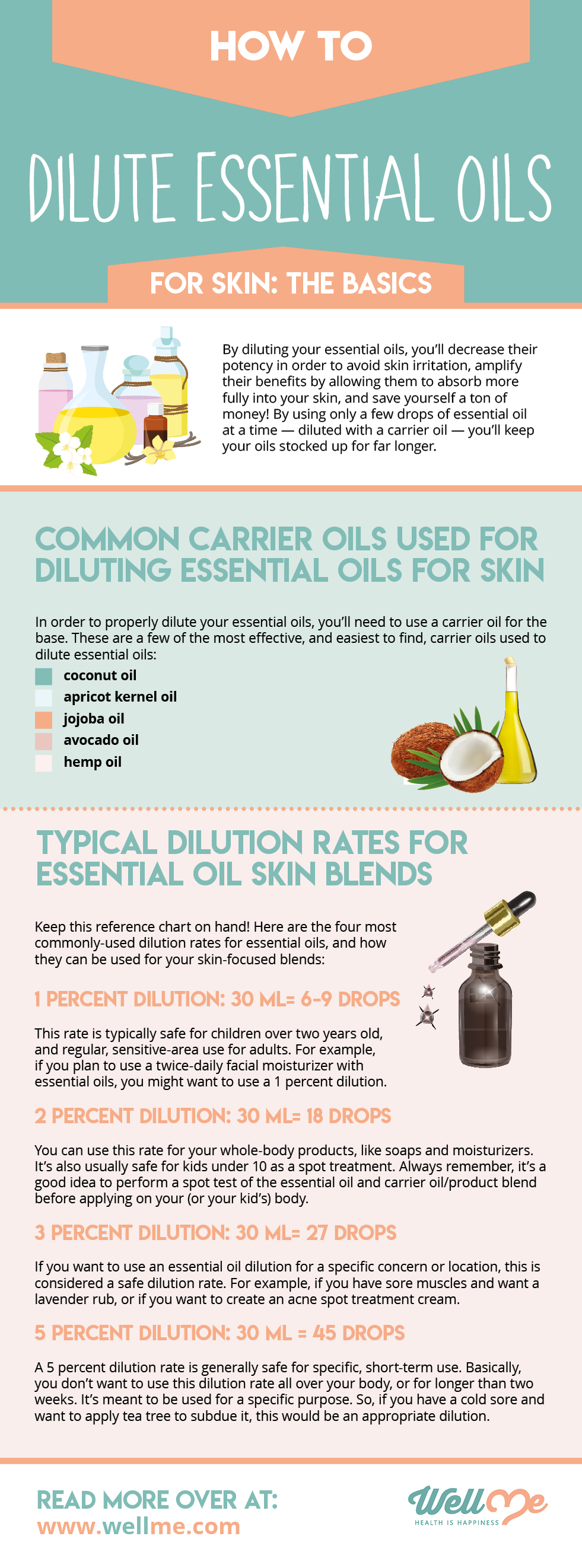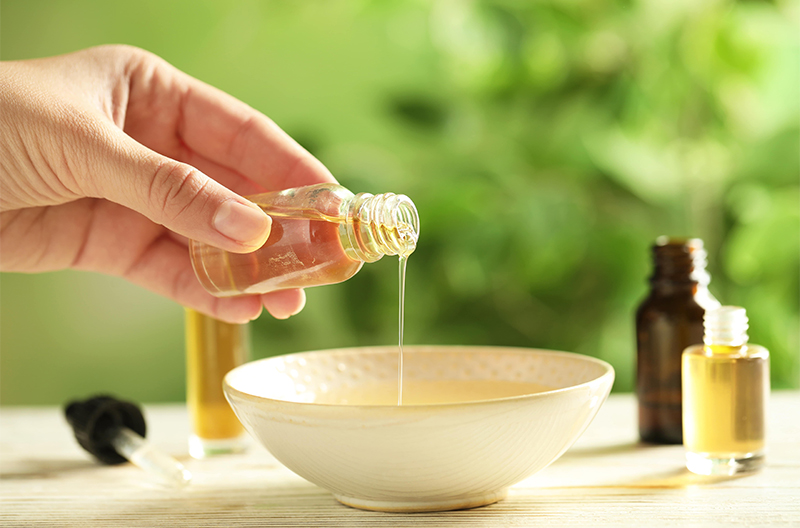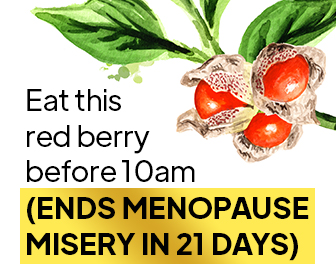Using essential oils topically can be very beneficial for your skin. For example, various essential oils for skin are anti-acne, anti-aging, and antibacterial. In short, the applications are endless when using oils on your body.
However, it’s important to learn how to dilute essential oils for skin. That way, you can use them safely, without any irritation. Let’s check out the basics of diluting oils along with why and how you should be diluting them on your own.
Why Do You Need to Dilute Essential Oils?
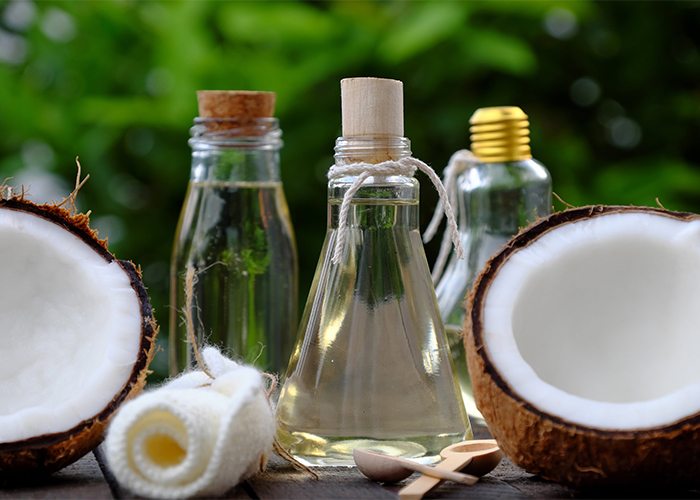
So, why is it so important to learn how to dilute essential oils for skin care? Well, here are a few key reasons why you’ll want to take this seriously, rather than put these oils directly on your skin:
Decrease Potency
First, you should dilute the oils to decrease their potency. You see, essential oils are plant-derived oils that can use hundreds of pounds of plant for a single bottle of oil in some cases.[1] Thus, each drop of the final essential oil product ends up being super powerful.
Because of the extreme potency, your skin can become irritated if strong oils are used without a carrier oil mixed in. This can cause irritation and sometimes pain.
Amplify Benefits
Next, you need to know how to dilute essential oils for skin to amplify their benefits. When you use a carrier oil with the essential oils, the oils can cover more surface area of your skin. In other words, you’re able to use less oil and get better results by improving the amount of skin touched.
On top of that, some carrier oils, like coconut, are super moisturizing,[2] this can help you absorb these essential oils faster because it penetrates your skin faster.
Save Money
Lastly, diluting essential oils will save you money. You’ll use less essential oil in a safer way, and be able to keep your oils stocked up for a longer time. This is a perk of dilution, not the main reason to do it. But hey — whatever gets you diluting!
What to Use to Dilute Essential Oils
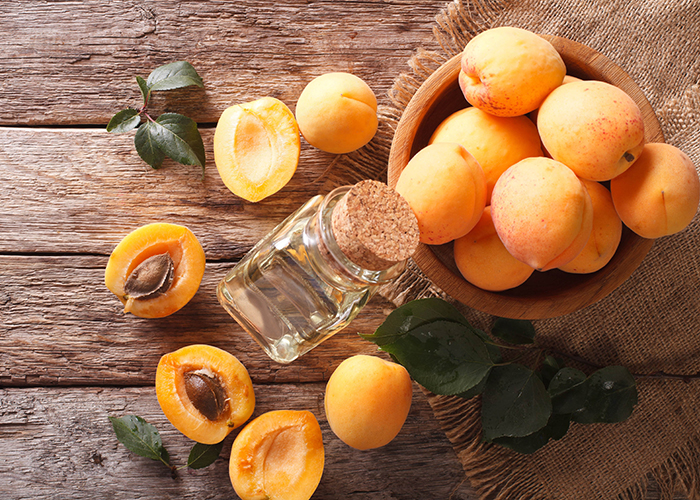
Before learning how to dilute essential oils for skin care, you’ll need to know what substances to use. In short, there are two main categories of substances you can use to dilute essential oils.
The first category is carrier oils. While these are not essential oils, they’re still plant-derivative oils. They’re just less potent and safer to use with direct skin contact.
Some examples of popular carrier oils include coconut oil, apricot kernel oil, jojoba oil, avocado oil, and hemp oil. Using carrier oils to dilute your essential oils is a quick and effective method for standard topical application. You can even mix them the palm of your hand!
The second way you can dilute essential oils for skin is with other cosmetic products. You can combine your essential oils with store-bought lotion, shampoo, creams, toners, or face masks. Plus, there are a ton of DIY essential oil recipes to make some of these products with essential oils yourself too.
How to Dilute Essential Oils for Skin Care
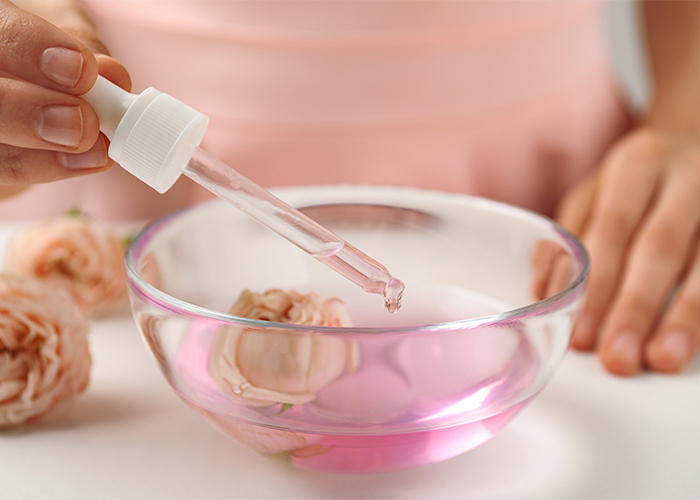
1. Select a suitable dilution rate
When choosing a dilution rate, you’ll have to take into consideration the quality of your essential oils. If you have high-quality oils, they’ll be more potent and powerful and thus require fewer drops in your blend, yielding a lower dilution rate.
If you have essential oils that don’t seem as pure (always research your brand before buying!) or are already blended, you can adjust your dilution rate accordingly. While this varies per person, it’s important to always start in the lower range and increase the dilution rate as needed.
Here are a few suggested dilution rates to get you started:
1 percent dilution: 30 ml= 6-9 drops
This rate is typically safe for children over two years old, and regular, sensitive-area use for adults. For example, if you plan to use a twice-daily facial moisturizer with essential oils, you might want to use a 1 percent dilution.
2 percent dilution: 30 ml= 18 drops
You can use this rate for your whole-body products, like essential oil soaps and moisturizers. It’s also usually safe for kids under 10 as a spot treatment. Always remember, it’s a good idea to perform a spot test of the essential oil and carrier oil/product blend before applying on your (or your kid’s) body.
3 percent dilution: 30 ml= 27 drops
If you want to use an essential oil dilution for a specific concern or location, this is considered a safe dilution rate. For example, if you have sore muscles and want a lavender rub, or if you want to create an acne spot treatment cream.
5 percent dilution: 30 ml = 45 drops
A 5 percent dilution rate is generally safe for specific, short-term use. Basically, you don’t want to use this dilution rate all over your body, or for longer than two weeks. It’s meant to be used for a specific purpose. So, if you have a cold sore and want to apply tea tree to subdue it, this would be an appropriate dilution.
2. Determine the volume of carrier oil

When experimenting with how to dilute essential oils for skin, you’ll also need to know how much carrier oil/product you’ll need.
For example, to make a facial toner you’ll need to know how to dilute essential oils with water for skin. In the end, it all depends on how big of a batch you want to make. With essential oils, it tends to be easier to make larger batches of blends because one-time uses might not allow a proper dilution rate.
Here are a few measurements for commonly-used products to give you an idea:
For moisturizing body oil: Use 90 ml of carrier oil.
For energizing facial mist: Use 15 ml of water and 15 ml of witch hazel.
For aftershave leg lotion: Use 60 ml of unscented lotion.
3. Use an essential oils dilution chart to determine how much essential oil to use
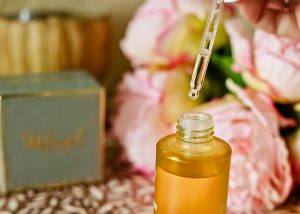
An easy way to combat the dilution dilemma is to use an essential oils dilution chart. Some essential oil brands have charts on their websites that are specific to their oil brand, so you know the potency vs dilution is safe.
To read these charts, first choose the volume of carrier oil/product you’re using. Next, scroll down and match your column with the row that correlates to the dilution rate you need. There, you should find the number of essential oil drops you’ll need for the recipe. Keep in mind that these charts are suggestions and each person has unique skin sensitivity levels. It’s always better to start with a low dilution and increase if needed.
Safety Precautions You Should Know Before Diluting Essential Oils
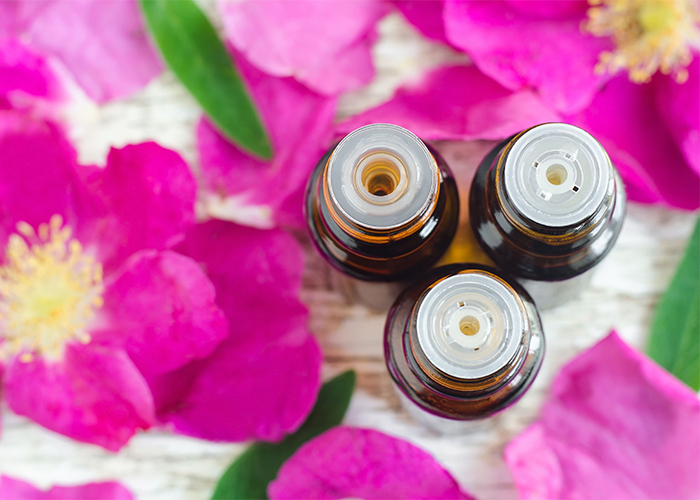
Now that you know how to dilute essential oils for skin care, here are some safety precautions to remember:
- Always choose the lowest dilution rate when applying oils to skin with cuts, wounds, or sunburns.
- It’s not recommended to use essential oils on children under the age of two. If you feel essential oils may benefit your infant, consult a doctor before applying.
- Don’t let the oils come into contact with your eyes, and always wash the residue off of your hands after mixing.
